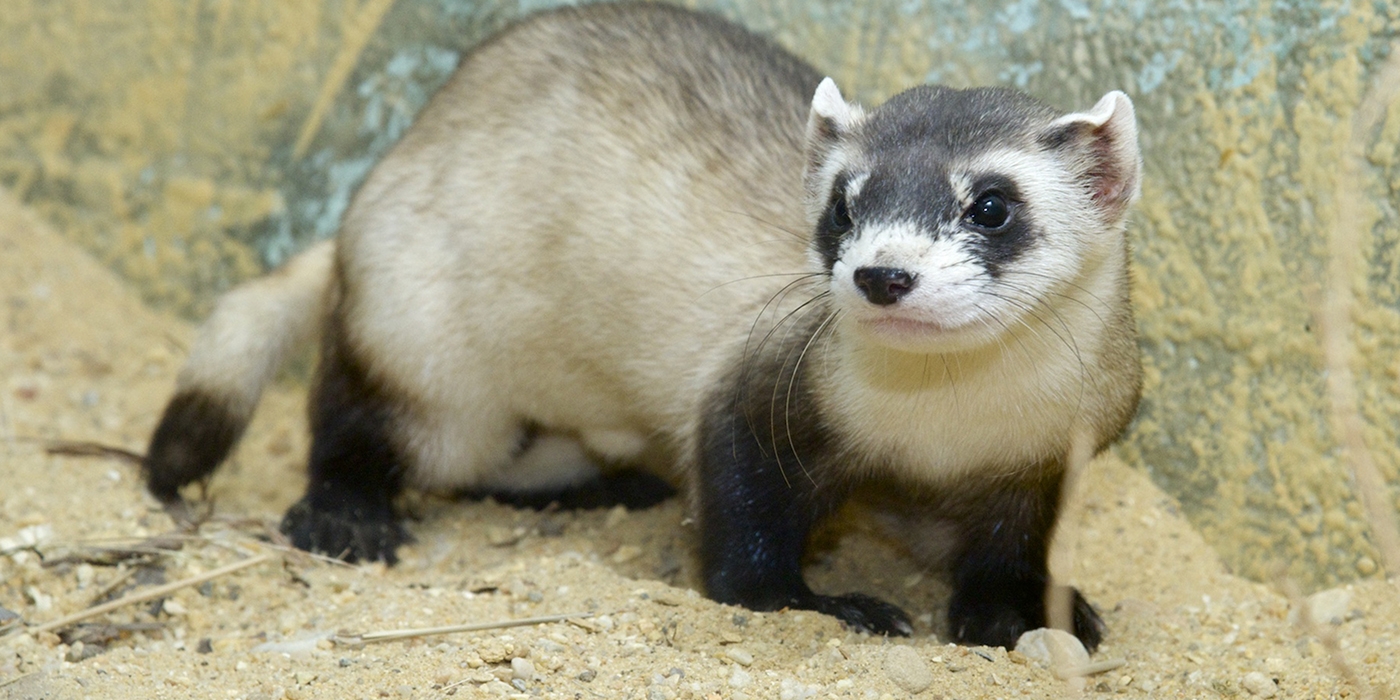COMMENTARY
By Dave Samuel
For the most part, this outdoor column is about wildlife, conservation and game species. Readers include the general public, and hunters, as well. I focus on deer a fair amount, because they are so popular with everyone, but when other wildlife species are in the news, I try to cover them, as well.
It seems however, that no matter what the latest news is on wildlife, COVID-19 virus is mixed up in it. Enter the black-footed ferret, of all things. Let me give some history on this neat weasel-sized critter before tying in the COVID-19 interaction.
Black-footed ferrets are in the weasel family and are native to central North America, in particular the prairies of the Midwest. Their diet is almost totally prairie dogs and they declined significantly over years. The reasons prairie dogs declined was because their habitat was lost. Ranchers also killed them to prevent them from digging holes where cattle fed and from eating grass needed for grazing. In addition, many prairie dog colonies, as well as black-footed ferrets, were hit with a sylvatic plague caused by a bacterium that is transmitted by fleas. Prairie dogs get the fleas, as do ferrets when they enter prairie dog holes. In various parts of the West, plague killed thousands of prairie dogs and hundreds of ferrets. As the prairie dogs declined, so did the ferrets, to the point where survival of that species was in doubt. Relative to the ferret becoming an endangered species, it has had a crazy up and down history.
Ferrets live where there are prairie dog colonies. Because their habitat is small, ferret populations are restricted. Thus, when numbers drop, it doesn’t take all that long for them to be in trouble. In 1967, it was declared an endangered species, and in 1979, after extended searches of prairie dog towns all over the plains states, it was declared “extinct.” However, a rancher’s dog brought a dead ferret to the house near Meeteetse, Wyo., in 1981. T hat led to a search and about one dozen ferrets were found living on 6,000 acres. The good news was that several of the ferrets from this small population were captured and a captive breeding program was started.
The bad news was the first six brought into captivity died of canine distemper virus. Man, these little guys just don’t stand a chance, or do they? The remaining ferrets in the wild grew to a population of 130, but sylvatic plague and canine distemper virus killed all but 18 animals. Those animals became the basis for a captive breeding program. Seven of those animals produced offspring that reproduced in the wild and those seven are the ancestors of all ferrets in the wild and in captivity.
Since 1990, ferrets have been reintroduced at prairie dog sites in Wyoming, South Dakota, Colorado, Utah (actually the Colorado site extends into Utah), Mexico and Canada. In 2007, there were 223 ferrets in one area of Wyoming, where 228 ferrets were reintroduced. Even though most of the reintroduced ferrets eventually died, a good population got started. In 2007, it was estimated that 650 ferrets were alive in the entire country, and another 250 in captivity. By 2013, the number believed living in the wild had climbed to 1,200.
There have been a series of projects to prevent sylvatic plague from killing prairie dogs and ferrets. When the plague enters a prairie dog colony, it can wipe them out. Of course when this happens, then the ferrets who live on those dogs are also eliminated. One example of just how devastating the plague can be was one prairie dog town where the plague killed all 1,500 residents in just two weeks. Bad stuff indeed.
The approach to control the plague in prairie dog towns is to apply insecticidal dust at the entrance to dog holes. That can be done to keep the fleas from entering dog towns, or to kill the fleas that are already carrying plague bacteria. There are also on-going efforts to create a vaccine for the prairie dogs to prevent the plague.
Now to the COVID-19 situation. The key to survival of ferrets has been the lab breeding programs. The National Black-footed Ferret Conservation Center in Colorado is the focal point of captive breeding, though four other American zoos and one in Toronto also raise ferrets. Because of the plague and distemper, these facilities already have various disease protocols in place. Given that ferret kits (young prairie dogs) are already susceptible to diseases, researchers and technicians are now taking extra precautions, so that COVID-19 is not introduced via infected humans, into the labs.
Ferret kits are also susceptible to the flu, so at the Toronto facility, if a worker has the flu, they can’t work with the animals. At the Colorado facility, if a ferret looks sick, it is placed in a quarantine area. In addition, they are practicing social distance for the kits, putting empty cages between cages with ferrets in them. They’ve also put plastic sheets between some cages to limit droplets from human workers and between ferrets. Personal Protective Equipment is also used.
Workers at the Toronto Zoo are monitored for COVID-19 before every shift. They note that they’ve always had disease protocols in place, but have heightened them because of Corona-19. Ferrets don’t need another disease.
This fall, 100- 200 kits from the Colorado facility will be released in the wild. This is done every year to aid populations where plague has lowered numbers. When I started researching this topic, I had no idea that saving the black-footed ferret involved so many people. It’s a testament to the value of scientific research that we have brought these ferrets back from “extinction.” Some may think that saving one mammal species is not worth the money that is put into this work. I’m not one of them.




